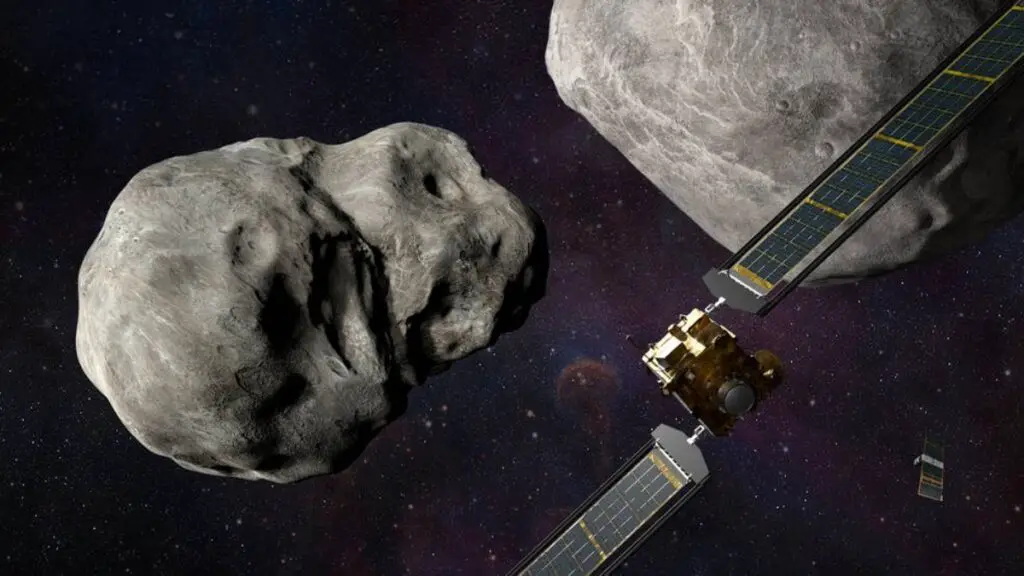In approximately 5 and a half years, astronomers predict that an asteroid nearly the size of the Empire State Building will pass within 20,000 miles of Earth, the closest proximity of such a large celestial object in modern history. Scientists believe that a spacecraft launched by NASA in 2016 will be in a prime position to closely study this rare celestial event, offering unique insights into planetary formation and potentially informing strategies for defending against asteroid collisions with Earth.
Initially discovered in 2004, the asteroid Apophis was believed to pose a potential threat to Earth, with early forecasts suggesting a possible collision in 2029. However, subsequent observations have ruled out any impact risk for at least another century. Nevertheless, the next approach of Apophis in 2029 will bring the asteroid within a very close distance to Earth, less than one-tenth the distance of the moon and well within the orbits of some geosynchronous Earth satellites.
The spacecraft OSIRIS-REx, known for collecting a soil sample from a different asteroid and returning it to Earth in 2020, has been repurposed and rebranded as OSIRIS-APEX (APophis EXplorer) to embark on this new mission. The Apophis expedition was detailed in a mission overview published in the Planetary Science Journal, outlining the objectives and potential contributions to scientific knowledge from this endeavor.
Apophis, a stony asteroid with an oblong and peanut-shaped appearance, is expected to pass within approximately 19,800 miles of Earth’s surface on April 13, 2029. Despite its close proximity, the observation of Apophis will likely not result in a grand spectacle but will be visible as a point of reflected sunlight in the night sky over Africa and Europe. Such a close encounter with an asteroid of this size is estimated to occur roughly once every 7,500 years, making the Apophis flyby the first such anticipated event.
As Apophis approaches Earth, the tidal forces of our planet’s gravity are expected to cause measurable disturbances to the asteroid’s motion and surface, potentially altering its orbital path and rotational spin. These tidal forces could even trigger landslides on Apophis and release rocks and dust particles to form a comet-like tail. The spacecraft OSIRIS-APEX is poised to closely observe the asteroid during its flyby and subsequent orbit, capturing images and data that will be crucial in understanding how Apophis was altered as it passed by Earth.
OSIRIS-APEX is scheduled to stay near Apophis for 18 months, employing a range of maneuvering techniques to gather detailed information about the asteroid’s surface and composition. This extended observation period will provide valuable insights into the mineralogy and chemistry of Apophis, offering scientists critical information about the structure and properties of asteroids. Understanding these characteristics is essential for formulating effective strategies to defend against potential impact threats from celestial bodies.
With the ability to monitor and analyze the potential consequences of Apophis’s close approach to Earth, the OSIRIS-APEX mission has far-reaching implications for planetary defense and scientific research. By examining the impact of Earth’s gravity on Apophis and conducting detailed observations of its surface, scientists hope to uncover essential information that can be leveraged in asteroid-deflection strategies and efforts to mitigate impact threats.
An asteroid of Apophis’s size, if it were to collide with the Earth at high speeds, could have destructive implications, potentially devastating a major city or region. Though it would not lead to global catastrophe, it could still result in significant consequences, such as tsunamis if the asteroid struck an ocean. Therefore, the study of Apophis and other celestial objects is essential for developing our understanding of potential impact risks and formulating comprehensive strategies to protect our planet from such threats.


